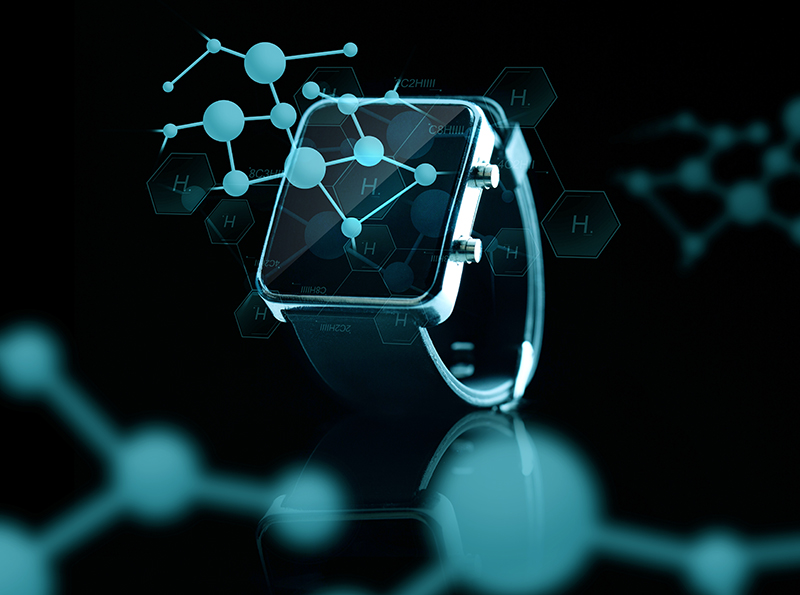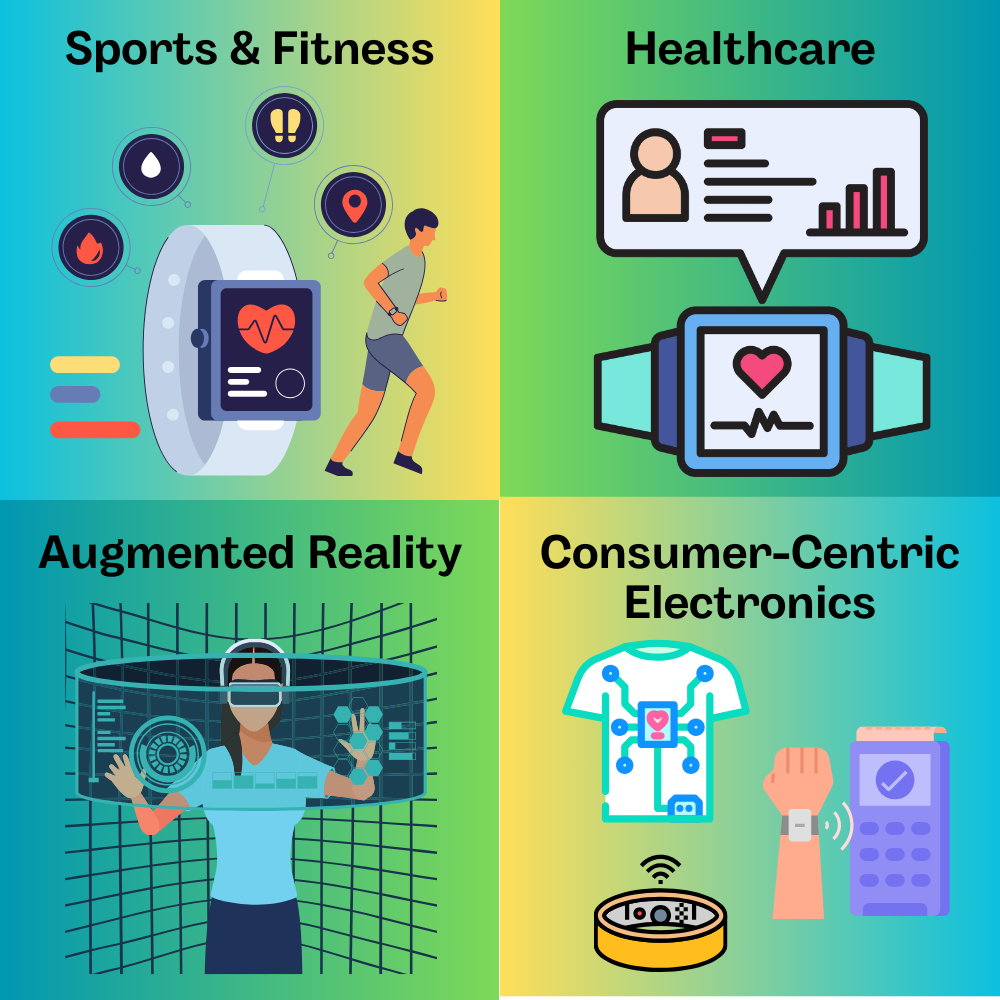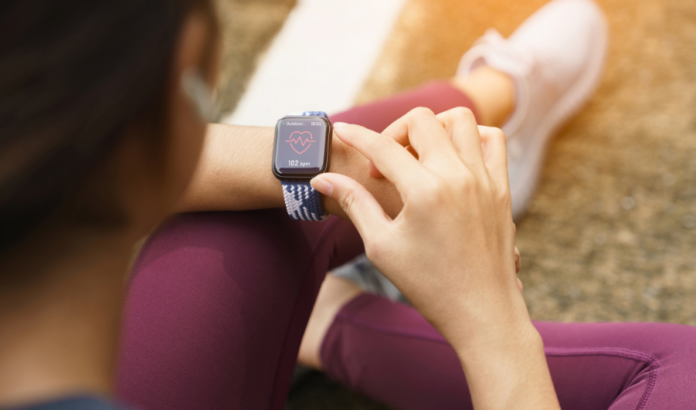Wearable technology has emerged as one of the more ubiquitous applications of the Internet of Things. It’s transforming the way we interact with electronic devices — specifically, in the way we receive, use, and share our personal data.
Today, wearable technology has broad applicability in various sectors including health, fitness, and productivity, and its ubiquity has enabled the industry to grow rapidly. Grand View Research valued the global market for wearables at US$61.30 billion in 2022 and further expects the market to expand at a compound annual growth rate of 14.6% from 2023 to 2030.
If you’re innovating in the wearables space, you’ll need to maintain a competitive edge by seeking robust IP protections — and, as a first step, you’ll want to understand the current state of the art, including the latest trends and developments.
What is wearable technology?
“Wearables” refers to smart devices that can be worn on the user’s body. These can take on various forms including accessories, clothing embeds, implants, or even tattoos.
Wearables enable the user to automatically transmit, track, and analyze data over the internet throughout the course of their daily activities.
Market trends for wearable technology: Product and device types
Wearables can be categorized by how they’re meant to be worn on the user’s body. When developing an IP strategy for wearable technology, you’ll want to consider commercialization and licensing opportunities for each category.

The most pervasive type of wearable product is wristwear — a category that spans smartwatches (e.g., Apple Watch) to fitness bands (e.g., Fitbit). According to Grand View Research, wristwear accounted for over 49.45% of overall wearable technology revenue worldwide in 2022.
Another popular product type is head-mounted displays (HMDs); when worn, HMDs superimpose digital content and images over the user’s field of vision. They’re most commonly used in augmented and virtual reality (AR/VR) applications. Recognizable examples of HMDs include Meta Quest, Microsoft HoloLens, and HTC Vive.
Hearables — which refers to in-ear smart devices with multiple functions — are also on the rise. They’re most commonly associated with earbuds, but could also refer to audio-enabled devices like smart glasses or jewelry (e.g., earrings). Market leaders in hearables today include Apple AirPods, Jabra Enhance, and the Sony CRE-E10.
Wearable technology may fall into a broader category of bodywear, which includes smart clothing. By weaving sensors and circuitry into everyday clothes, smart clothing offers its users increased convenience and comfort. Current leading brands on the market include Sensoria and Wearable X.
Beyond that, wearables are evolving beyond conventional designs as well, with innovators constantly seeking out new ways for products to interact with the human body. One promising example is electronic tattoos (also known as e-tattoos), whose soft form allows them to conform to almost any part of the body. Another example is exoskeletons or exosuits, which are wearable structures that can support or augment the body’s capabilities.
Keep these categories in mind when you’re pursuing patent protection for any wearable technology. Consider drafting independent claims for each type of clothing article or accessory that has commercial relevance. There are several advantages to this approach. First of all, if your patent claim is specific to an in-ear device, you might be able to avoid prior art that’s only relevant to HMDs and other types of devices. Generally speaking, more focused claims tend to be more robust against prior art. Second, this type of claim strategy presents more licensing opportunities, since each set of claims can potentially be licensed to a different market sector.
Of course, there are also disadvantages to parsing claims out to specific categories. For one thing, you might miss out on patent coverage for clothing articles or accessories that only become commercially relevant after your patent is filed. In general, broader patent claims have a better chance of covering a wider array of technologies. Second, drafting, filing, and prosecuting patent applications with many independent claims can be much more expensive and time consuming. Often, the best use of limited resources is to pursue a small number of broader independent claims.

Market trends for wearable technology: Top industries and applications
Wearables can also be categorized by their application. While wearable technology could potentially see diverse uses across a range of industries, several applications are especially in demand. To strengthen IP protection for wearable technology, consider how your inventions could be used across a variety of industries and a broad range of practical applications.
- Sports and fitness
Fitness wearables are autonomous, noninvasive devices that track information related to health and fitness:
- At a basic level, fitness wearables may serve as physiological monitors, tracking information like walking steps, calories burned during workouts, heart rate, or sleep patterns.
- Smart fitness wearables may include capabilities like predictive information, as well as integration with external applications.
In their most common form, fitness wearables tend to take the form of fitness trackers (like the FitBit) or smartwatches.
- Healthcare
The market for wearable healthcare devices is certainly booming; MarketsandMarkets predicts its value to approach US$70 billion by 2028. There are two broad categories of wearable healthcare devices: medical-grade and consumer-grade.
First, medical-grade wearables are often available by prescription only, and may also require approval by the U.S. Food and Drug Administration (FDA). That’s because the data gathered by these devices may be used to support clinical decision-making like diagnosing, treating, or monitoring health concerns. Examples of medical-grade wearables include blood pressure, glucose, and heart monitors.
Second, consumer-grade wearables are commercially marketed technologies for monitoring personal health and are typically non-prescription. Examples include watches, rings, and articles of clothing.
According to MarketsandMarkets, consumer-grade devices comprised the largest share of the healthcare-related wearables market in 2022.
That said, the line between medical-grade and consumer-grade healthcare wearables is starting to blur, as the former is becoming increasingly easier for consumers to access.
- Augmented reality (AR) integration
AR, which layers virtual objects over the user’s physical environment, is poised to change the way we interact with our surroundings. Market interest in AR has soared recently, as the technology’s potential applications have expanded from gaming to include healthcare, education, retail, and more.
Presently, AR is being integrated into wearables (like glasses, visors, and other headsets) to offer users an immersive content viewing experience.
For more information about AR and its current market potential, please check out our blog post: Virtual and Augmented Reality: An Overview of the Patent Landscape.
- Consumer-centric electronics
There is also growing market interest in wearables that enhance productivity, communication, and entertainment in our day-to-day lives.
As one example, smartwatches have evolved into multipurpose gadgets that make notifications, calls, and other data from our phones more accessible. Statista projects that revenue in the smartwatches market will reach US$28.72 billion in 2024.
As another example, with the growing demand for contactless payment solutions, innovation in wearable payment technology has responded in kind. The majority of applications utilize near field communications (NFC) technology, which allows two devices within short range of each other to connect. While the most notable example can be found in smartphones, several companies are developing wearables like rings (e.g., RingPay, K Ring) and clothing (e.g. CashCuff).
When you’re drafting a patent application for wearable technology, make sure to consider all possible applications and use cases. Your patent specification (the claims, drawings, and detailed description) should reflect the full range of scenarios where the invention can provide a technical benefit or improvement over existing technology. This type of disclosure in the initial patent application can serve many purposes in the context of prosecuting, enforcing, and licensing your patent rights. For one thing, describing use cases and technical benefits can help convince a patent examiner that the invention is “innovative” or “non-obvious” and, therefore, worthy of patent protection. Furthermore, showing practical applications for your technology can mitigate the risk that your patent will be challenged as a mere “abstract idea” that’s not eligible for patent protection.
The global competitive landscape for wearable technology
Increased urbanization in different parts of the world has contributed to the growing demand for wearables, especially for sophisticated devices that are visually appealing.
According to Mordor Intelligence, North America currently accounts for the largest market share. However, the Asia-Pacific region is expected to grow at the highest CAGR from 2024-2029, in large part due to China’s position as a global manufacturing hub for electronics.
Due to the broad range of technologies at play, there are many significant players in the overall wearables market, which means the competitive landscape is quite fragmented.
According to GlobalData, these were the top 5 patent holders worldwide for technology related to wearables published between 2002 and 2022:
- Samsung Group (3,716 patents)
- Apple Inc. (2,973 patents)
- Sony Group Corp. (2,523 patents)
- Alphabet Inc. (2,175 patents)
- 63.9% of these patents are owned by its subsidiary, Google LLC
- Microsoft Corp. (1,860 patents)
That said, other notable companies innovating in the space include:
- Huawei Technologies Group Co., Ltd.
- Xiaomi Corp.
- Adidas AG
- Nike, Inc.
- Garmin Ltd.
- Meta Platforms, Inc.
- Koninklijke Philips N.V.
- Magic Leap, Inc.
Opportunities and challenges facing wearables technology
As wearables technology continues to advance and the patent landscape grows increasingly complex, you may face a number of opportunities and challenges to grow your business.
On the innovation front, you may find opportunities to address the difficulties presented by data collection and analysis. Specifically, wearable technology has made it possible to collect too much data — but our capability to parse said data is not as efficient.
For example, a wearable device might be able to monitor a patient’s blood pressure and heart rate in real time, but the device might not provide a physician with a way to effectively identify trends and anomalies in the data.
Moreover, even if such an analytical tool existed, it is unclear whether the wearable device will have the computing power needed to run the tool — opening up a conversation around developing APIs to integrate wearables with other systems.
Meanwhile, to protect your intellectual property in a fast-changing field, you will need to develop a forward-thinking patent strategy to ensure adequate protections for your latest developments. For one, many wearables involve multidisciplinary innovations, and you’ll want to account for every aspect of your technology. For another, due to the sheer size of the market, you’ll want to file early enough to avoid encountering unexpected prior art.
The importance of partnering with a qualified patent attorney
Developing a smart patent portfolio, with a strategic mix of broad and narrow claims, is essential for any business to stay competitive in the large and rapidly evolving wearables market. We’d strongly advise consulting a qualified patent professional to help protect your wearables innovations. Please feel free to contact us with any questions.
IS IT TIME TO START BUILDING YOUR PATENT PORTFOLIO? WE’LL HELP YOU FIND OUT!
When you’ve got game-changing technology on your hands, you can’t wait to share with the world — which also means protecting it from competitors.
But is now the right time to start moving forward with the patent process? Download our FREE checklist to find out. Learn the following:
- What does a patent really do?
- Does your invention have substance?
- Do you have all the necessary resources lined up?
- Is your business structure — and all the logistics — ironed out?
- How should you proceed if you’re not quite ready to begin the patent process?
Dive deep into the patent process and get all your IP readiness questions answered.
Fill out the short form on this page to download this checklist today!
GET THE FREE CHECKLIST

Michael K. Henry, Ph.D.
Michael K. Henry, Ph.D., is a principal and the firm’s founding member. He specializes in creating comprehensive, growth-oriented IP strategies for early-stage tech companies.

